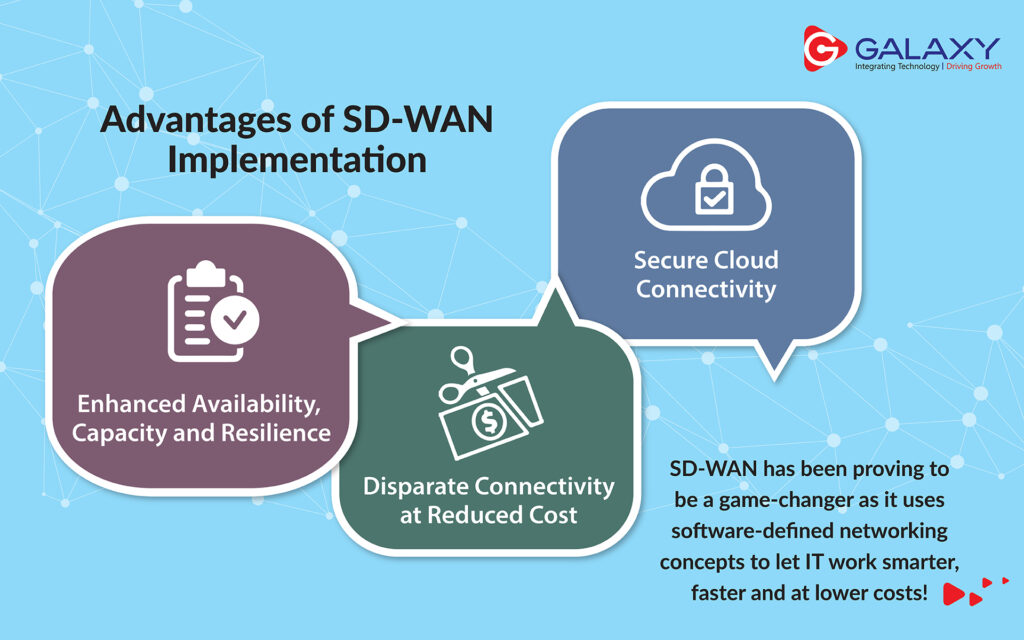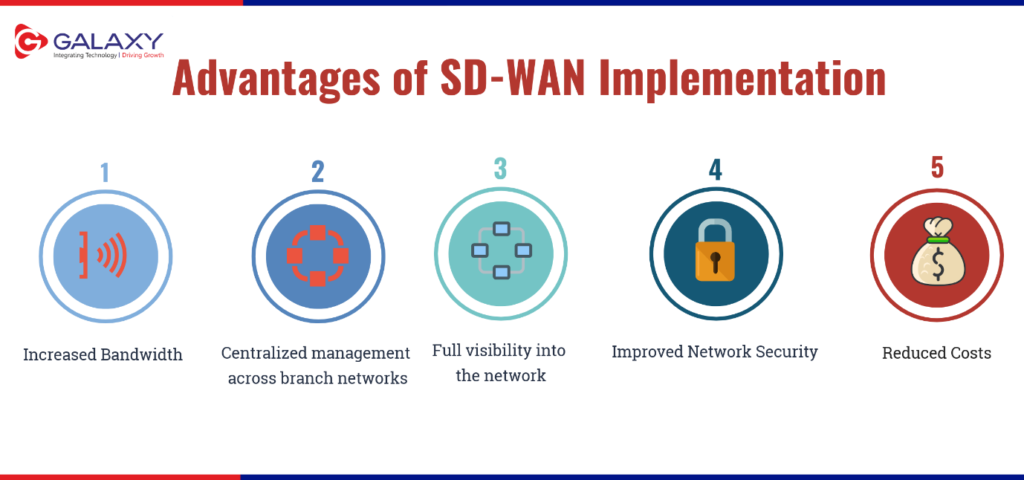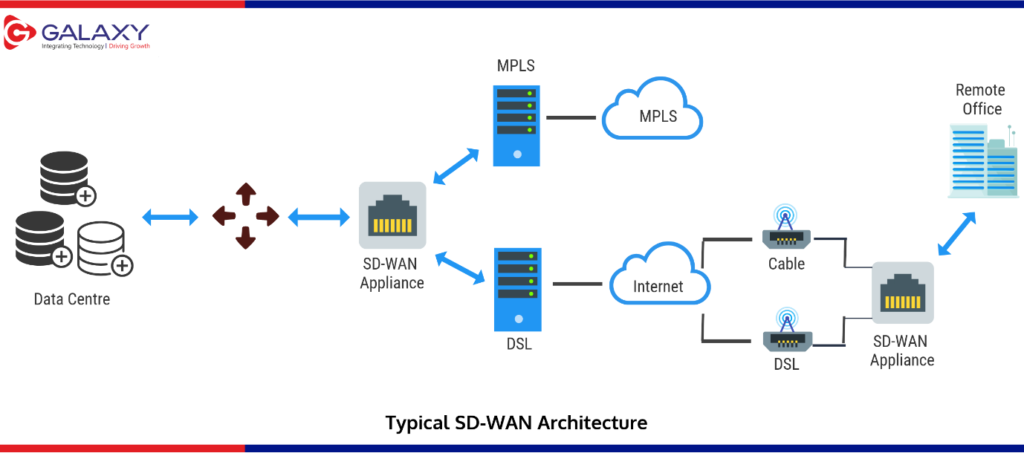
Advantages Of SD-WAN Implementation
SD-WAN – WHAT ENTERPRISE IT LEADERS NEED TO KNOW
As part of rapid evolution, more and more enterprises are adopting new technologies, moving their data and applications to cloud platforms and establishing critical business resources to be accessible anytime, anywhere via direct internet connections. As this happens, there is a huge demand for businesses to change their WAN architectures and adopt a smarter network that that can simplify the interconnection for any user, from any location, via any device over any deployment, while ensuring security and reliability.
Software-defined WAN has been proving to be a game-changer as it uses software-defined networking concepts to let IT work smarter, faster and at lower costs!
Traditional vs. Smart Networking
Traditional WANs use expensive connections such as leased line and Multiprotocol Label Switching (MPLS) that are incompatible with the cloud-centric and mobile-first modern enterprises. It requires huge infrastructure and manual programming to connect disparate complex networks. This is a very expensive, time consuming and error prone process.
SD WAN greatly simplifies the process by automatically determining the most effective way to route traffic across disparate offices and data centre sites by using business defined rules from a central management portal. It comes with the promise of Agility, Flexibility and Security, all of which come at an overall reduced networking and infrastructure cost.

Benefits of Using SD-WAN
If you are stuck with a legacy network, built on rigid, expensive and capacity-constrained MPLS, which doesn’t offer the promise of supporting your business transformation, then it is time to evaluate the benefits of SD-WAN. Listed below are some of the tangible benefits that can justify the investment in this software defined networking rage being created by SD-WAN.
- Enhanced Availability, Capacity and Resilience

Every organization is dependent on a network with robust infrastructure. Network uptime and availability are defined by how robust the infrastructure is. Although MPLS and other traditional technologies promise availability and uptime, it comes at a very high cost. Organizations also spend on secondary internet link as a failover option, in case of an outage. Although, a secondary option is not as robust and is seldom used, it is a cost the company has to incur.
SD-WAN enables IT to augment MPLS with high-capacity internet connections, which not only connect appropriately to various links in real-time, but also augments bandwidth capacity as needed. SD-WAN automates the use of concurrent links using a feature called Policy Based Routing (PBR). When one link fails, PBR automatically routes application traffic to the most appropriate link, intelligently prioritising traffic by business need, thus improving availability, capacity and resilience, thereby enabling uninterrupted productivity.
- Disparate Connectivity at Reduced Cost
Using expensive MPLS services to connect globally is a huge cost for companies with multiple locations. Most organizations using traditional WAN continuously upgrade their bandwidth to ensure a reliable connection. SD-WAN reduces networking cost by leveraging inexpensive internet connections and dynamically selecting from a more cost-efficient assortment of public Internet connections and private links.
- Secure Cloud Connectivity
Traditional WAN is too slow and error-prone to match the networking demands of the Cloud era. As more and more enterprises are steadily moving to cloud data centres and cloud based-applications, there are dedicated MPLS links managing traffic to the cloud. This adds latency to the network, as the traffic that reaches the datacentre ultimately reaches the internet. This kind of network backhaul wastes MPLS capacity, slowing down traffic.
SD-WAN uses a software defined model to intelligently steer traffic to where the app resides on the Cloud, without backhauling to a POP or HQ Data Centre. SD-WAN technology also has built-in firewall capabilities avoiding security compromises.
FOR A FREE CONSULTATION, PLEASE FILL THIS FORM TO CONTACT US.
